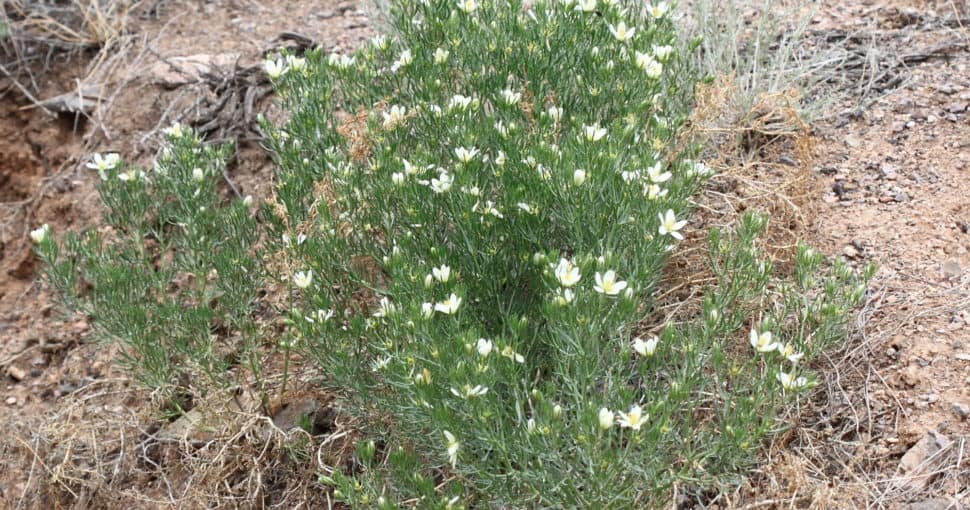Colorado is home to abundant species of plants, including some poisonous varieties that might appear benign but can do significant damage to humans and wildlife. Read on to discover poisonous plants in Colorado to protect yourself and your loved ones from them!
Contents
- 1. Larkspur (Delphinium)
- 2. Meadow Death Camas (Zigadenus venenosus)
- 3. Locoweed (Oxytropis)
- 4. Western Water Hemlock (Cicuta douglasii)
- 5. Lupine (Lupinus)
- 6. Poison Ivy (Toxicodendron radicans)
- 7. Poison Hemlock (Conium maculatum)
- 8. African Rue (Peganum harmala)
- 9. Myrtle Spurge (Euphorbia myrsinites)
- 10. Caladium (Caladium x hortulanum)
- 11. Colorado Blue Columbine (Aquilegia caerulea)
- 12. Castor Beans (Ricinus communis)
- 13. Cardinal Flower (Lobelia cardinalis)
- 14. Snowdrop (Galanthus)
- 15. Flowering Spurge (Euphorbia corollata)
- 16. Hellebores (Veratrum)
- 17. Wolf’s Bane/Monkshood (Aconitum)
- 18. Four o’clocks/Marvel of Peru (Mirabilis jalapa)
- 19. Chinese Evergreen (Aglaonema)
- 20. Calla Lily (Zantedeschia aethiopica)
- 21. Mistletoe (Viscum album)
- 22. Crown of Thorns (Euphorbia milii)
- 23. Daffodil (Narcissus)
- 24. Irises (Iris)
- 25. Sweet Pea (Lathyrus odoratus)
As you venture out of your home and explore the great state of Colorado, be mindful of the toxic plants growing in its woods, prairies, meadows, mountainous slopes, and alongside its rivers, coastlines, roads, parking lots and more. These plants might appear harmless, and some of them might even feature attractive and scented blossoms, but they often have poisonous blooms, leaves, stems, seeds, or roots.
Some common toxic plants in Colorado include different species of Larkspur, Locoweed, Daffodils, Western Water Hemlock, and more. Some poisonous plants might only cause mild symptoms, such as itching skin or mild nausea, while others might cause severe dermatitis and other serious symptoms caused by ingestion.
If you are aware of the poisonous plants in your state, you can keep yourself, your children, other loved ones, pets, and livestock away from them. It will help you avoid them when you’re out hiking, cleaning your garden, exploring the neighborhood, and more.
So, without ado, let’s explore 25 poisonous plants in Colorado you should watch out for:
1. Larkspur (Delphinium)
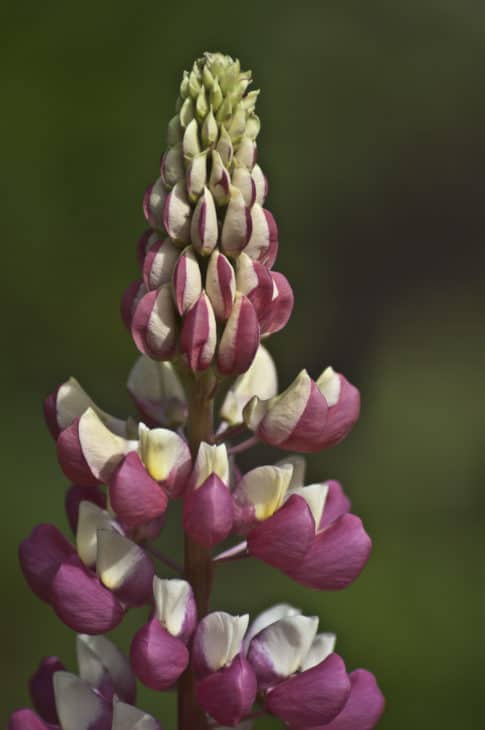
Larkspur is a genus of about 300 perennial and annual flowering plant species native to the high mountains of tropical Africa and various parts of the Northern Hemisphere. This plant usually grows well in areas with rich, deep soils. Larkspur plants can be divided into three groups based on their height and geographic locations – low Larkspur, tall Larkspur, and plains Larkspur.
The commons aspect between all of these species is that they feature deeply lobed foliage and prominent blue blooms. All parts of this plant genus are toxic. Ingesting Larkspur can cause bloating, nausea, weakness, excessive salivation, muscle twitching, pulmonary congestion, and fatality.
2. Meadow Death Camas (Zigadenus venenosus)
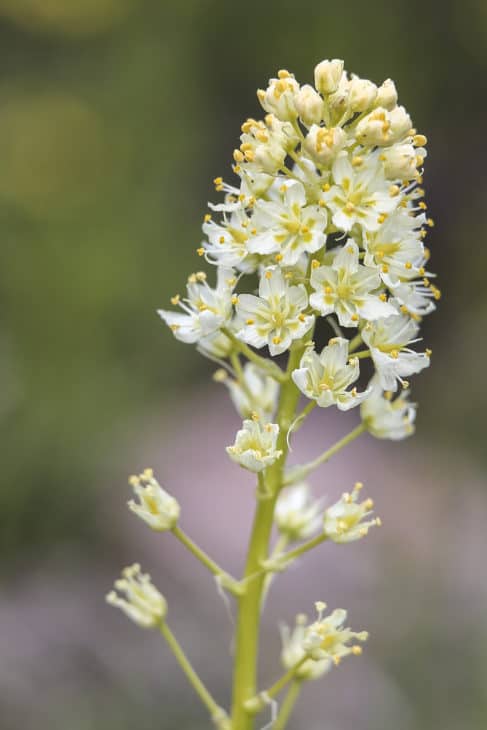
Also known as Poison Onion, Meadow Death Camus is a perennial herb that grows throughout the western United States. It’s a member of the lily family and features white or cream-hued, petal-like segments with a short stalk at their base and long stamens.
The entire plant contains multiple complex poisonous alkaloids and is potentially lethal. All fresh parts of this plant can cause poisoning, and its dried seeds and capsules contain potent toxins. Ingesting Meadow Death Camas can cause severe illness, nausea, dizziness, profuse vomiting, and even death.
3. Locoweed (Oxytropis)
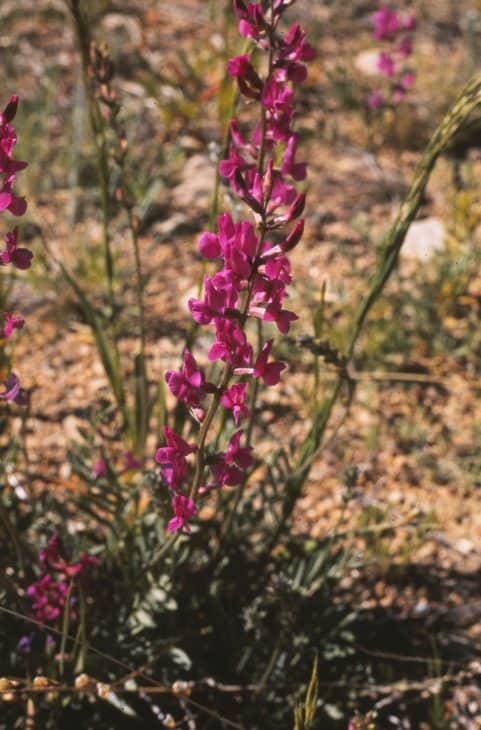
A common North American plant, Locoweed is also known as Crazyweed or Loco. It grows in prairies, mountain meadows, open slopes, and other sunlit areas. It produces leathery, obovate to ovate leaves and bears purple-tinged, dirty-white spring blooms.
This plant contains swainsonine, selenium, phytotoxins, and other toxins that are harmful to animals and can cause locoism. Locoweed poisoning symptoms include excessive salivation, hyperactivity, aggression, weakness, seizures, and more.
4. Western Water Hemlock (Cicuta douglasii)
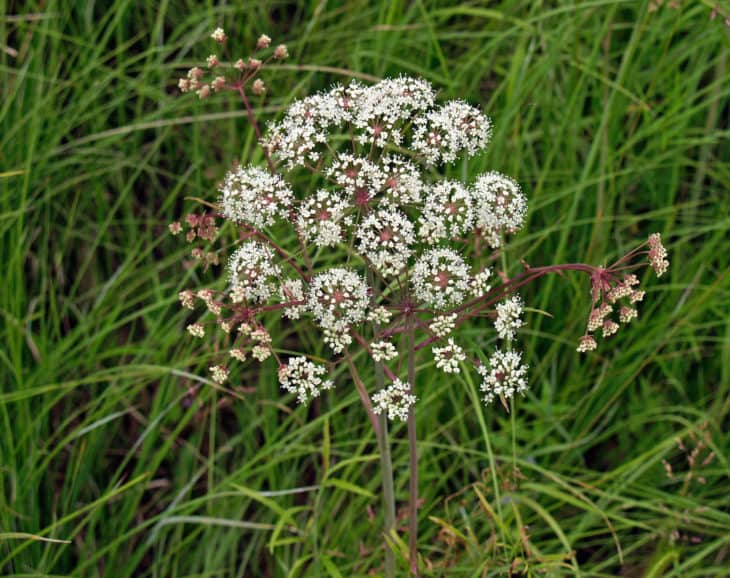
Widely considered one of the most poisonous plants in North America, Western Water Hemlock is native to the intermountain region. It grows in wet meadows, pastures, and along river streams. This wetland plant features small, white blossoms that grow in umbrella-type clusters. It also bears fleshy, thick tubers and a thick rootstalk. Western Water Hemlock contains the toxin cicutoxin, which acts directly on the central nervous system and acts as a violent convulsant. A threshold dose of this plant can cause grand mal seizures and death.
5. Lupine (Lupinus)
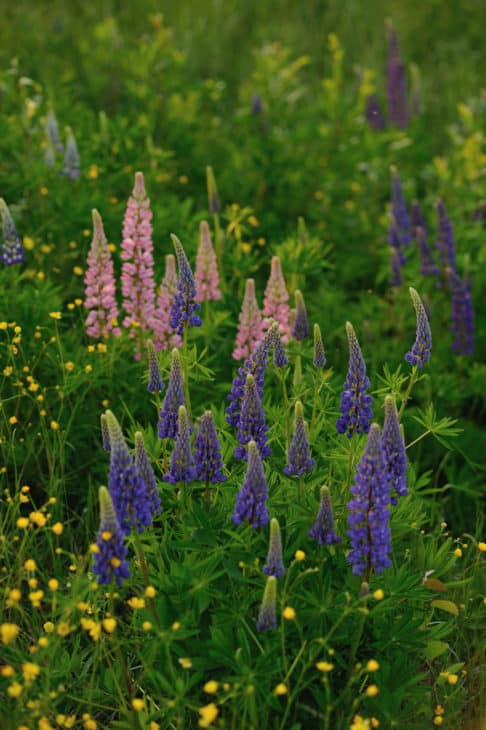
Native to North America, Lupine is an herbaceous ornamental plant that grows annually and perennially. It features multiple elegant flower spikes that come in several hues, such as yellow, blue, white, red, pink, and more. It also grows palm-like leaves. Lupine contains high levels of a poisonous alkaloid known as lupanine. When ingested in high amounts, it results in toxicity in livestock and humans.
6. Poison Ivy (Toxicodendron radicans)
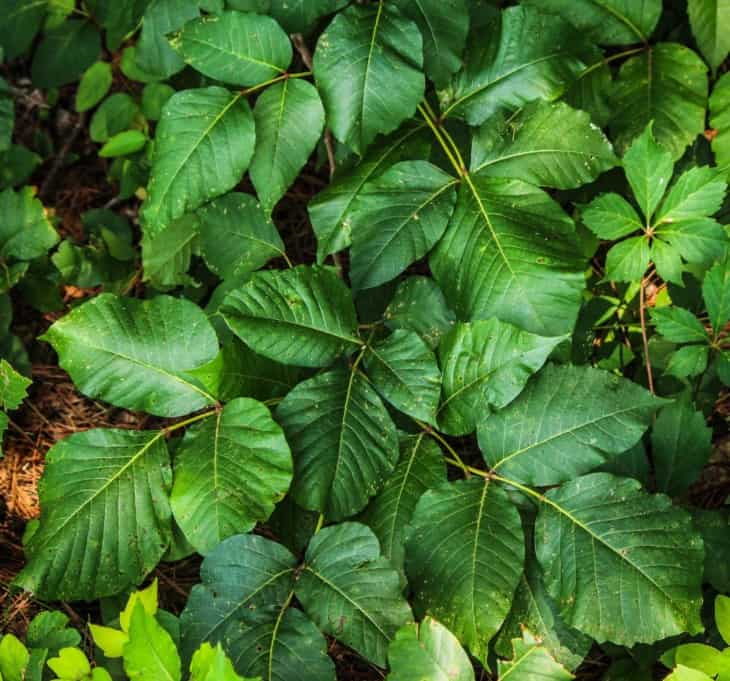
Native to eastern North America, Poison Ivy is a highly toxic plant with a variable growth. It develops serrated, hairy leaves that usually turn different shades of orange, yellow, and red in fall. Depending on how it’s grown, Poison Ivy can develop into a surface-level, low weed shrub or an upright, climbing vine.
It grows greenish drupes and yellow or green blossoms. This toxic shrub contains urushiol, which is an oleoresin that can cause dermatitis, a condition in which the skin develops rashes, itchiness, and inflammation. In some cases, it can also cause oozing blisters to appear on the skin.
7. Poison Hemlock (Conium maculatum)
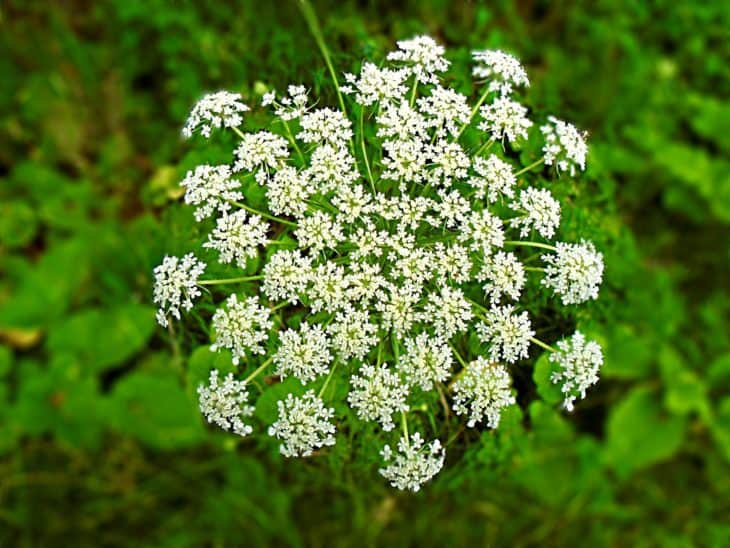
Native to North Africa and Europe, Poison Hemlock is an aggressively-spreading toxic plant that contains coniine and toxic alkaloids. This biennial is also present in Asia, North America, and Australia. It grows along roadsides, streams, and rivers. It also thrives in open and sunny sites and empty lots.
Poison Hemlock should never be touched or ingested as it can cause you to experience paralysis and dizziness. It can also dilate your pupils and cause fatalities. This herbaceous weed develops umbrella-like clusters of tiny white blossoms and fern-like, bright green leaves with serrated edges and a musty odor. It also grows stems with distinct red-purple spots and streaks.
8. African Rue (Peganum harmala)
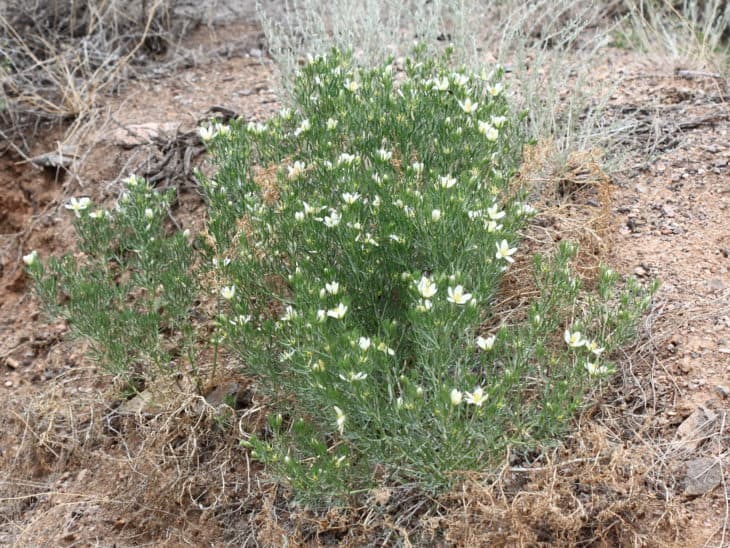
African Rue is a drought-resistant, highly branched, bushy shrub with alternate, deeply divided, bright green, narrow, glabrous, smooth-edged leaves. It also bears 5-petaled, white blooms with a yellow center.
The blooms give way to small, round seed pods that can be green, brown, or orange. African Rue features branched taproot with short, creeping roots. All parts of this perennial plant are poisonous to livestock and humans. It causes a loss of appetite, stiffness, excessive salivation, and more.
9. Myrtle Spurge (Euphorbia myrsinites)
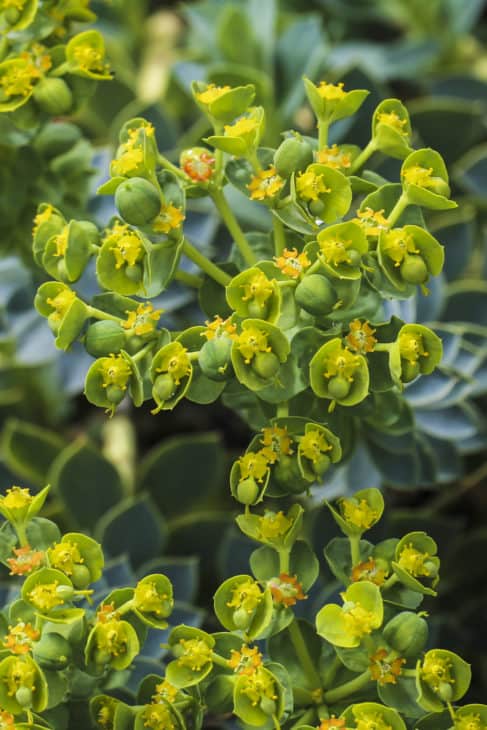
Also known as Donkey Tail and Creeping Spurge, Myrtle Spurge is a succulent perennial native to grassy and rocky sites in Asia Minor and southeastern Europe. It’s considered a noxious weed in many US states. Myrtle Spurge has an architectural shape and is an attractive glaucous blue. Its trailing stems are covered with spirals of waxy, fleshy, closely set, pointy leaves that emerge from the crown.
Myrtle Spurge features spring blossoms that grow in clusters. The flowers are inconspicuous, yellow-green, and star-shaped. They have bright yellow or chartreuse bracts. This plant has a milky white sap that is poisonous upon ingestion. Direct contact with the sap can result in minor skin irritation or severe dermatitis, depending on the susceptibility of the individual.
10. Caladium (Caladium x hortulanum)
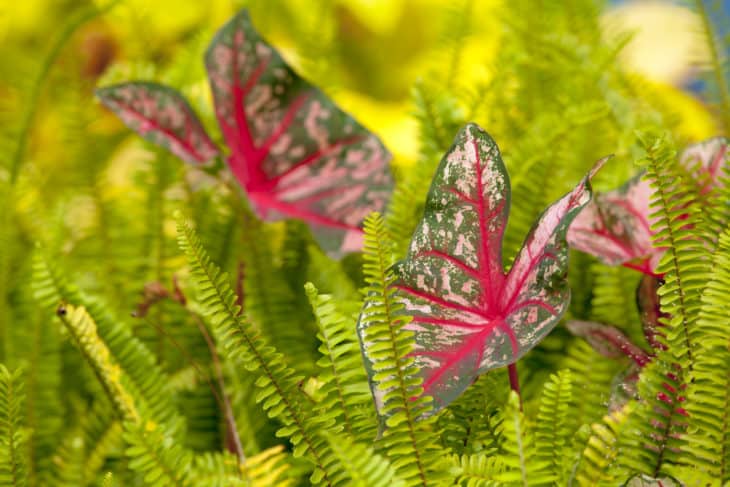
Native to tropical forests in Central and South America, Caladium is a tuberous herbaceous plant. Also known as Heart of Jesus and Elephant Ear, this plant has showy leaves that come in variable colors and are shaped like an arrow or heart. Caladium is a non-hardy ornamental that you can plant outdoors or indoors.
All parts of Caladium are poisonous because it has calcium oxalate crystals. When ingested, it can result in excessive salivation, severe gastric irritation, and swelling of the mouth and throat. Direct contact with Caladium sap can also cause severe itching and burning of the skin.
11. Colorado Blue Columbine (Aquilegia caerulea)
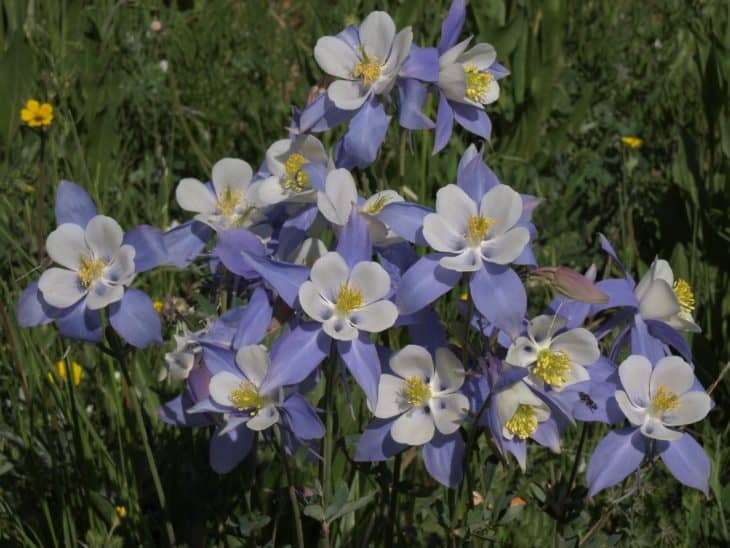
Known as the state flower of Colorado, Colorado Blue Columbine is a Western North American native that grows in well-drained, moist, rich soils. Also known as Rocky Mountain Columbine, this bushy, clump-forming plant is a perennial with upward-facing, large, bicolored spring blossoms that have 5 white sepals and 5 pale to sky blue sepals.
It also features biternate, compound, fern-like, lobed, medium green leaves with deeply-cleft leaflets. The seeds and roots of this plant contain cardiogenic toxins and are poisonous. When consumed, they can cause heart palpitations and gastroenteritis.
12. Castor Beans (Ricinus communis)
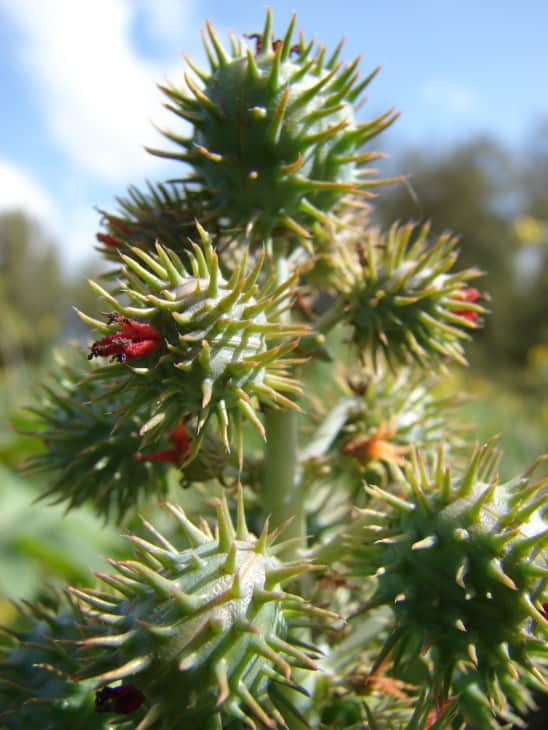
Castor Bean is native to northeastern Africa and the Middle East. It’s an erect, rapidly-growing perennial that thrives in moist, rich soils. It grows in fields, along roadsides, and in waste areas. It is also grown ornamentally. Castor Bean features huge, toothed, palmately lobed, glossy green leaves.
Castor Bean grows reddish-brown, round, spiny seed capsules. It also bears apetalous, small, cup-shaped, greenish-yellow blossoms. All parts of Castor Bean are poisonous when ingested. The seeds are especially poisonous as they contain ricin. Contact with its leaves might cause an allergic reaction in some people.
13. Cardinal Flower (Lobelia cardinalis)
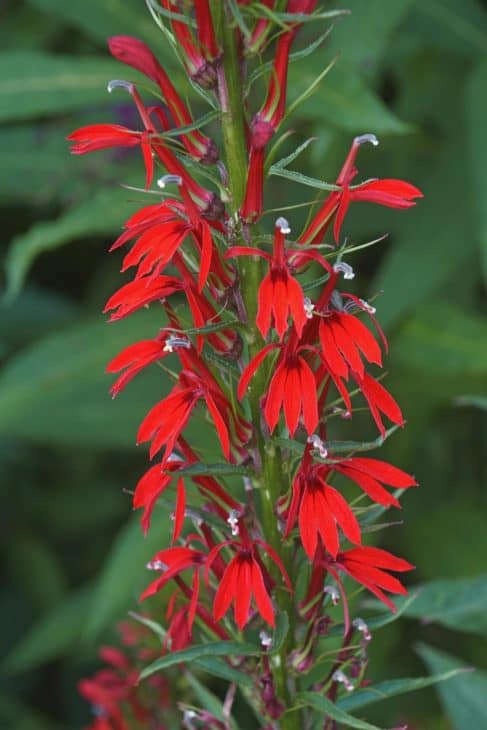
Cardinal Flower is an herbaceous perennial native to Missouri. It typically thrives in moist areas along springs, sloughs, streams, swamps, and wooded areas. This clump-forming, short-lived plant features terminal, erect spikes of cardinal red, large, two-lipped, tubular blossoms that grow on alternate-leafed, unbranched stalks.
It grows lance-shaped, finely toothed, dark green leaves. All parts of the Cardinal flower are poisonous when eaten in large quantities. It can cause vomiting, nausea, diarrhea, exhaustion, salivation, weakness, convulsions, dilated pupils, and coma.
14. Snowdrop (Galanthus)
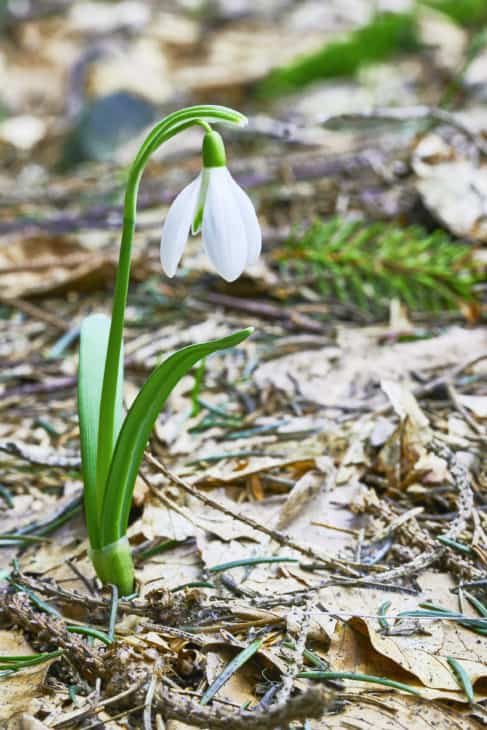
Snowdrop is a bulbous perennial native to forested spaces in the Caucasus Mountains. Its common name is an ode to its purported blossoms that resemble drops of snow. Each bulb of a Snowdrop produces two or three narrow, linear, erect, basal leaves and a leafless flower scape topped with late winter to early spring blooms.
The flowers are single, waxy, nodding, white-hued, and bell-shaped. The stems, leaves, and bulbs of Snowdrop contain phenanthridine alkaloids. When ingested, they can cause drooling, adnominal pain, diarrhea, vomiting, low blood pressure, seizures, and a drop in heart rate.
15. Flowering Spurge (Euphorbia corollata)
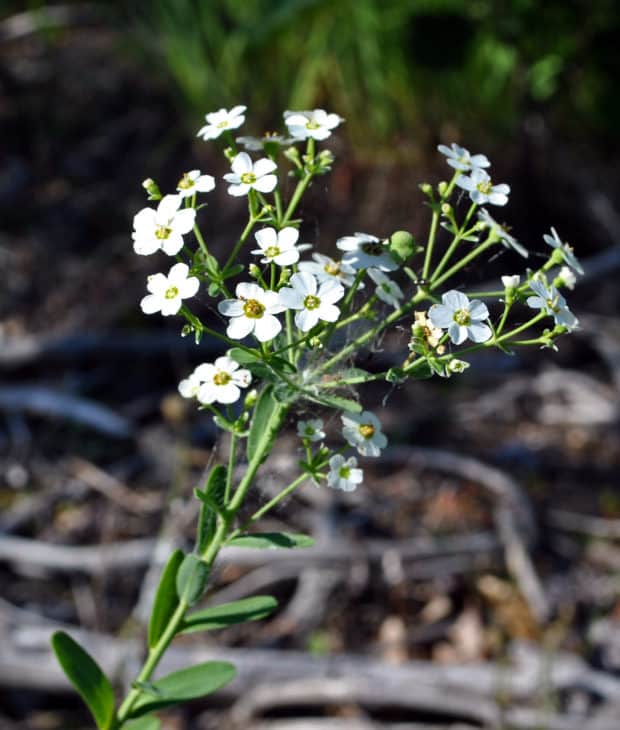
Flowering Spurge is a drought-resistant, herbaceous perennial native to South East Canada and Eastern & Central US. This diffusely-branched, slender plant features distinct, oblong, alternate, green leaves that turn burgundy in fall. It also grows monoecious, non-fragrant, cup-shaped, white, showy blooms that give way to seed-containing capsules.
Flowering Spurge prefers to grow in forests or natural areas along the edge of woods, roadsides, old fields, waste places, and more. Its milky sap contains toxic latex. When consumed, it can cause vomiting, nausea, and diarrhea. Skin contact can result in swelling, blisters, and redness.
16. Hellebores (Veratrum)
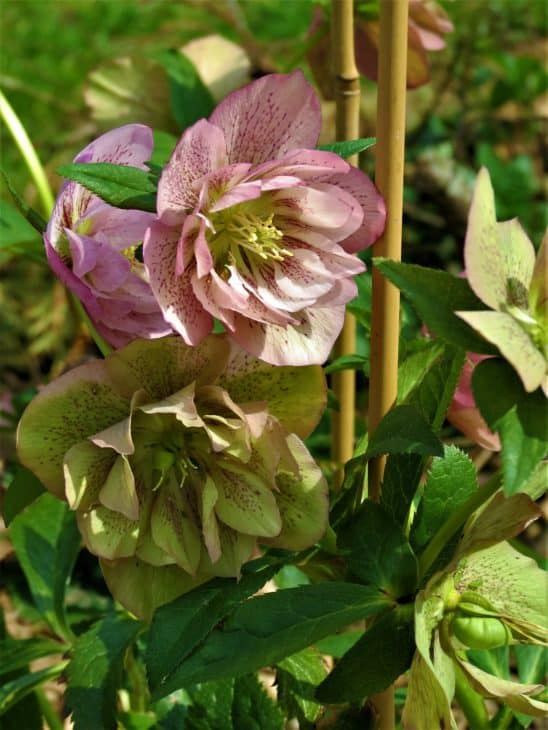
Native to Southern and Central Europe, Hellebores are poisonous perennials that cause poisoning in livestock. Also known as Cow Cabbage, these plants feature single-branched stalks that develop clusters of cream-colored blooms at their tip. A Hellebore has black seed pods and long leaves.
Every part of this plant is toxic, but its roots are 10 times more poisonous than its leaves and stems. It contains steroidal alkaloids that can cause shallow breathing, convulsions, vomiting, irregular gait, frothing at the mouth, and coma.
17. Wolf’s Bane/Monkshood (Aconitum)
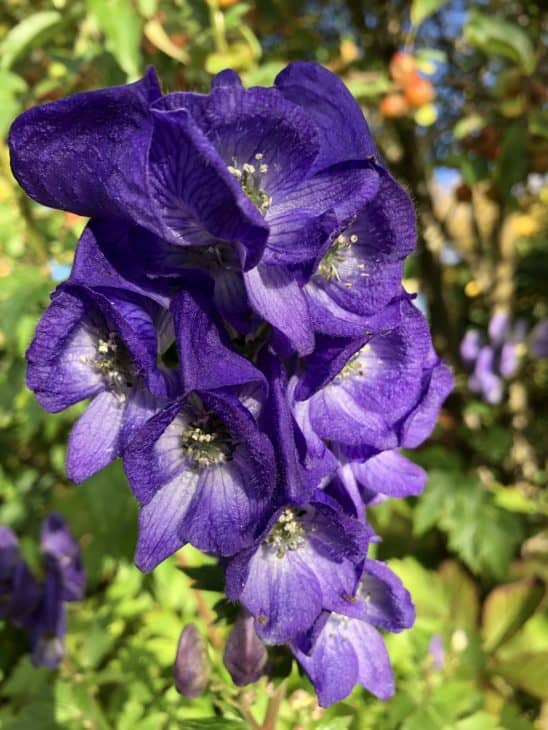
Monkshood is a genus of more than 200 showy perennial herbs. These plants occur in the North Temperate Zone in rich soils and partial shade. Some Monkshood species are ornamental plants. However, all of the species are considered exceptionally poisonous.
Wolf’s Bane has thick, tuberous roots and leaves with fingerlike lobes. It also features hood-shaped blossoms that grow in spike-like clusters. The flowers can be yellow, blue, purple, or white. All parts of this plant, especially its roots, are poisonous. Ingesting this plant can cause nausea, vomiting, stomach pains, irregular heartbeat, difficulty in breathing, and a burning sensation in the mouth.
18. Four o’clocks/Marvel of Peru (Mirabilis jalapa)
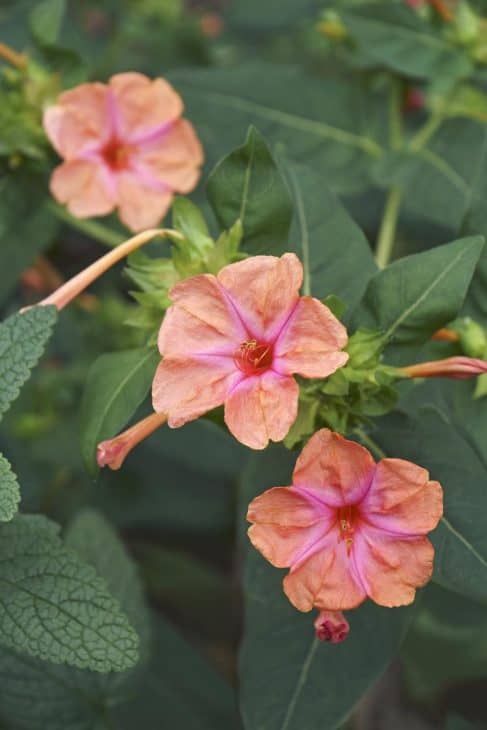
Marvel of Peru is a tropical American native shrub-like tuberous perennial. This erect and spreading plant features axillary clusters of fragrant-trumpet-shaped, tubular blooms that have a sweet scent. The blossoms can be pink, yellow, red, magenta, white, or even bicolored. Marvel of Peru also grows branched stems decked with ovate, bright green leaves. The flowers give way to dark, large, leathery fruits in the fall. The seeds and roots of this plant are considered toxic and can cause psychedelic symptoms.
19. Chinese Evergreen (Aglaonema)
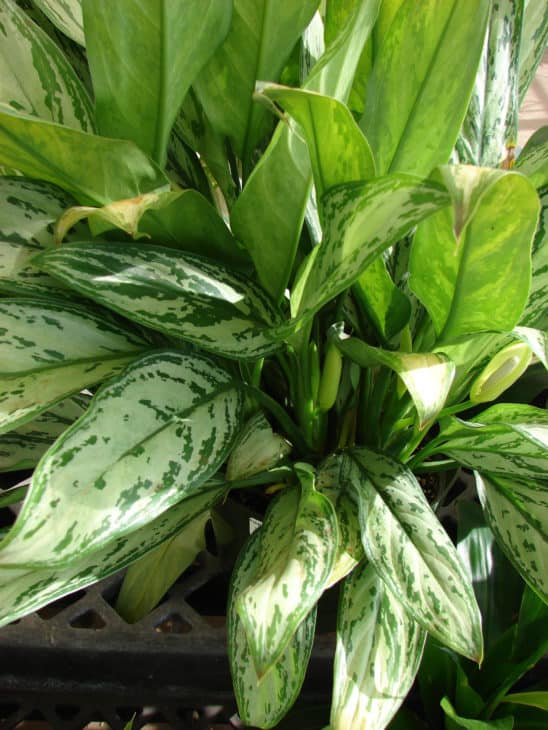
Native to tropical and subtropical Asia, the Chinese Evergreen is a slow-growing herbaceous perennial. Also known as Philippine Evergreen, this plant has many varieties, including variegated, plain green, blotched, and speckled species. Its leaves are oval-shaped, elongated, and grow at the tip of its stalks. It has a short trunk and tiny blooms that give way to berries. Chinese Evergreen is a poisonous plant when ingested. It can also cause irritation of the mucous membranes, pain, and rash.
20. Calla Lily (Zantedeschia aethiopica)
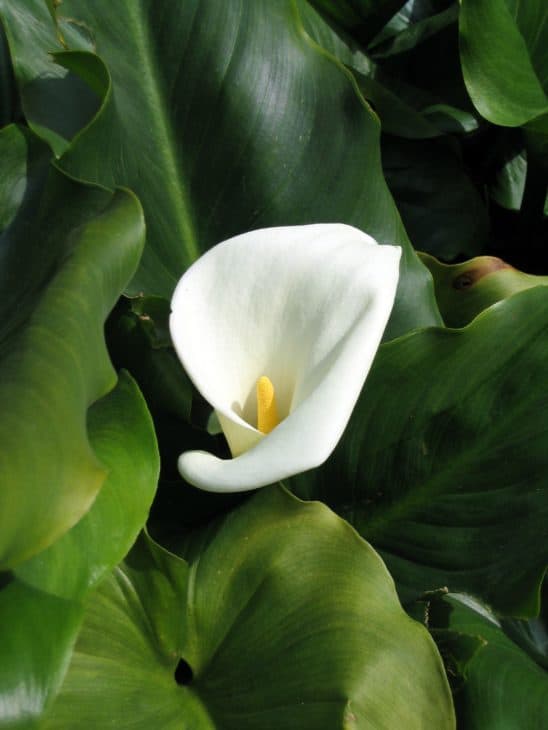
Calla Lilies are perennials with distinctive flowers that come in various shades, including yellow, classic white, orange, rose, lavender, pink, and dark maroon. This plant features smooth, sword-like leaves that are often decked with white freckles. The foliage looks attractive and neat all season long.
Native to South Africa, Calla Lily is found along coastlines, coastal prairies, and wetlands in North America. This plant contains insoluble calcium oxalate crystals. When ingested, it can cause pain, temporary hoarseness, swelling, and difficulty swallowing.
21. Mistletoe (Viscum album)
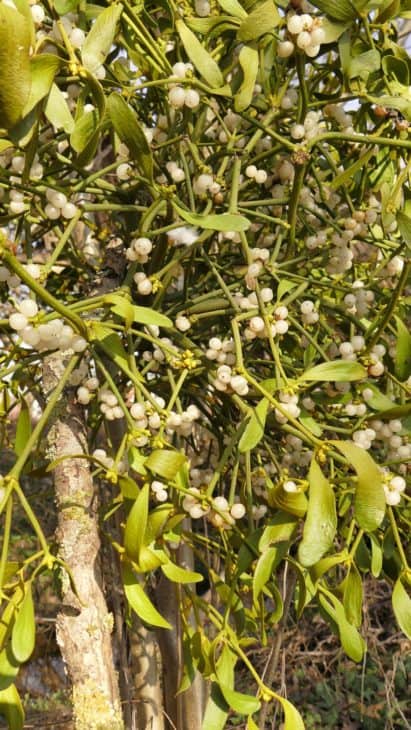
Mistletoe is a hemiparasitic shrub that thrives on the crowns and stems of other broad-leaved trees, such as hawthorn, apple, lime, and poplar. Also known as Eastern Mistletoe, this plant is native to Nepal, Europe, and south-western Asia. This woody, poisonous shrub features yellow-green, leathery, oblong leaves and obscure, green blooms. Female Mistletoes produce clusters of tiny, yellowish, or white, fleshy fruits with single seeds. The stems and leaves of this plant are poisonous.
22. Crown of Thorns (Euphorbia milii)
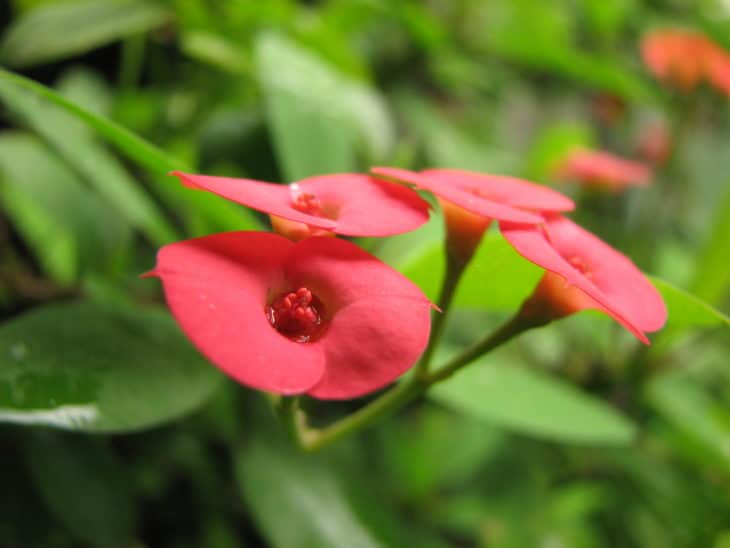
Also known as Christ Thorn, Crown of Thorns is a thorny plant native to Madagascar. It’s grown in warm climates as a garden shrub. This hardy perennial features stout gray thorns, oval leaves that drop with age, and red flower bracts. It grows branching, sprawling, vine-like stems and small, inconspicuous blooms that grow in paired clusters and surround showy, light red bracts. Crown of Thorns has milky white sap that is poisonous and can cause eye and skin irritation.
23. Daffodil (Narcissus)
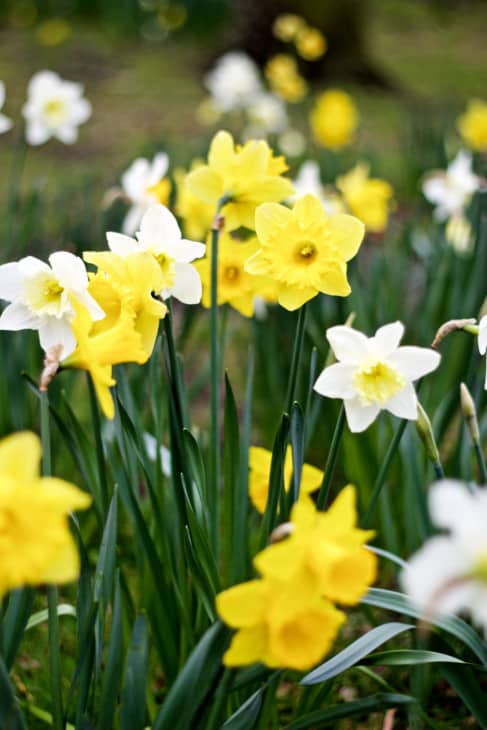
Native to Northern Europe, Daffodils are poisonous perennial herbs. Also known as Tazettas, Daffodils grow gold, pink, orange, white, or variegated blossoms that are attractive, scented, and trumpet or star-shaped. This plant also features waxy, simple, deciduous, narrow, green, strap-shaped leaves.
Daffodils are toxic when consumed in large quantities. These plants can cause nausea, diarrhea, vomiting, salivation, trembling, and convulsions. Coming into contact with Daffodils can also result in dermatitis, which is a severe skin rash. The bulbs can cause low blood pressure and cardiac arrhythmias.
24. Irises (Iris)
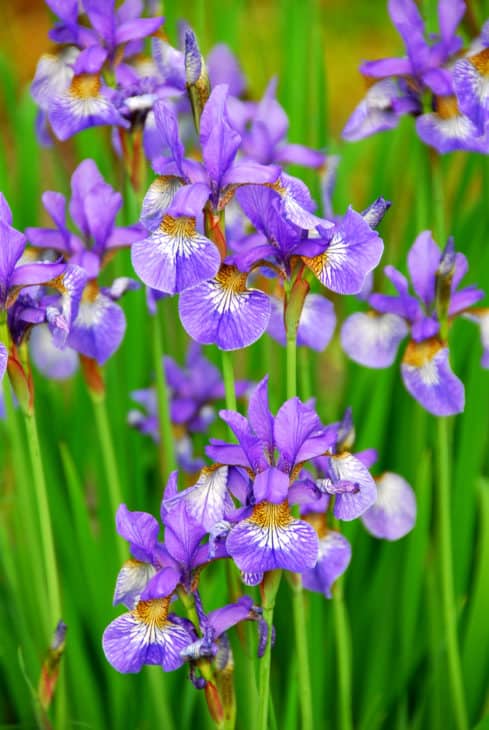
Iris is a genus of around 300 flowering plants that grow in the North Temperate Zone, Mediterranean, and central Asian regions. They are rhizomatous or bulbous plants with thick, creeping underground stems. Some species have ringed, robust, horizontal stems, and others have conical and short stems.
The blooms commonly have three petals, three sepals, and three broad, stigma branches that hide the anthers. Irises typically grow dry capsule-like fruits. Iris bulbs are poisonous as they contain toxic compounds. They can cause nausea, vomiting, diarrhea, adnominal pain, and fever.
25. Sweet Pea (Lathyrus odoratus)
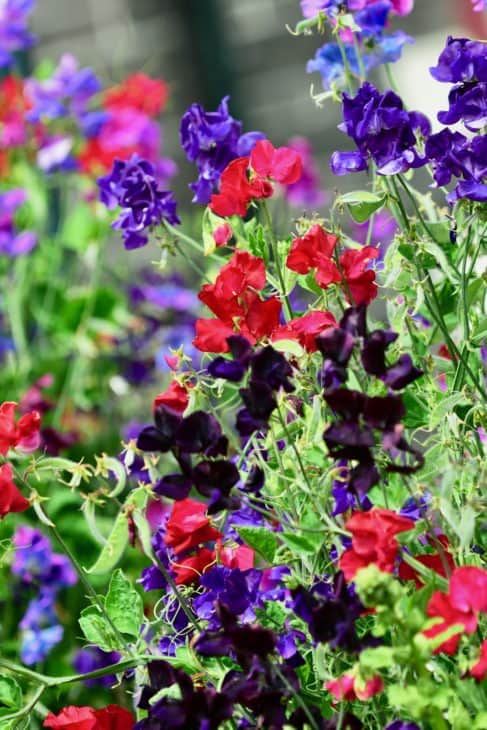
Native to Italy, Sicily, and Crete, Sweet Pea is a climbing or bushy annual that features incredibly fragrant, keeled blooms that grow in clusters on winged stems. It has tendrils that allow the plant to climb, but without support, it grows into a bushy mound.
The stems are clad with medium to dark green leaflets and blooms that can be purple, red, pink, blue, white, or bicolor. The seeds contain lathyrogens and are mildly poisonous. Ingesting them in large quantities will cause Lathyrus, resulting in paralysis, convulsions, and labored breathing.

